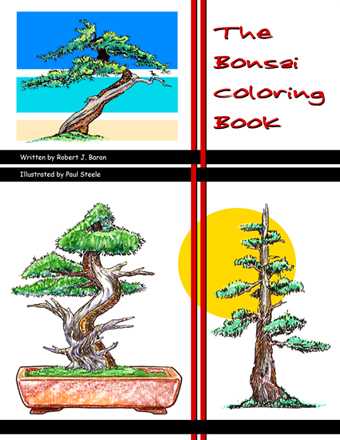
|
THE BONSAI COLORING BOOK
Text © 2005 by Robert J. Baran and Illustrations
© 2005
by Paul Steele
PYRAMID DANCER PUBLICATIONS
|

|
THE BONSAI COLORING BOOK
Text © 2005 by Robert J. Baran and Illustrations
© 2005
by Paul Steele
PYRAMID DANCER PUBLICATIONS
|
|
|
|
Order The Bonsai Coloring Book via PayPal
or to Order both Designing Dwarfs and The Bonsai Coloring Book |
About This Book
Sources of the Pictures Additional Info |
| Word Searches |
Other Illustrations to Color
|
|
The first of its kind anywhere in any language. The styles, the trees, the seasons, the different lands.
For children of all ages. Playfully educating the mind's eye. It always was a coloring book, but it wasn't always quite this way. * * * * * The idea of a coloring book as a way to teach kids about bonsai occurred during my first visit to the National Arboretum's Bonsai and Penjing Museum in July 1998. (This was barely eight months after my first book came out, Designing Dwarfs in the Desert. That one was definitely for a low-volume but quality niche market.) By month end a rough draft of the text for A Bonsai Coloring Book had been made and the idea was presented to an informal gathering of the Phoenix Bonsai Society. "I'll buy two!" was the very first response. Our sensei Leroy Fujii was also at this gathering and he gave his approval with a smile. (Unfortunately, Leroy then died the first day of that November and would never see more of this project.) Over the next several months, sketches were made to better tell the tale. In the meantime to help motivate me, announcements were sent out about A Bonsai Coloring Book, a guide to your first dwarf potted trees (list price of $3.95 and ISBN 0-9659913-4-2). This was dutifully picked up by some of the Internet book sites (and is even today faithfully listed, even though that book was never published, moneys never received for it, and it never existed). As I am not the best artist, about this time I hit the proverbial wall with only about a third of the drawings first drafted. (For posterity's sake, many are reproduced below for kids to color.) (In the spring of 1999 the Phoenix Bonsai Society web site was introduced and started its awesome growth. Mention of A Bonsai Coloring Book, a guide to your first dwarf potted trees has been on that web site since the very beginning.) In discussing the coloring book project with Tom and Sena Zane, Marty Klein, and Bill Smedley during the summer of 1999, it was brought home to me that the book as conceived was too ambitious. It sought to introduce the audience to bonsai as well as to teach how to make one. I guess my assumption was that since there were NO children's bonsai books available at the time, THIS would have to be it. It was suggested to me to split the project into [at least] two books. The first and most important one would describe what bonsai were, where they came from, what the basic styles were, where they could be see, and so forth. The second book would be for teens and total beginners. It would give "hands-on" information which was otherwise currently lacking in the market. Now, in the fall at the beginning of the 1999-2000 Phoenix Bonsai Society club year, I happened to notice a new guest sketching some of the trees brought for display that evening. He and I chatted and, by evening's end, Paul Steele, a professional graphic designer, had committed to help work on the pictures. Paul had done one coloring book already (about Rodeo Clowns), and had taught drawing to kids/novices. Paul was relatively new to bonsai, having only a dozen trees in training, so I preceeded to help educate him on the different styles using books and older magazine articles, by showing him the trees of our late teacher, Leroy Fujii, and those of other club members in the area. When viewing Leroy's trees, Paul ended up giving the few gathered club members an impromptu session on the myriad of natural colors in the leaves and bark, especially in or out of shadows. By this time I had done a re-draft of the book's format, and Paul and I started discussing what was needed page-by-page. By the end of the year, my out-of-town friends had made suggestions on my re-draft to help my stay focused on the basics of the project. A basic set of drawings was completed by springtime of 2000, but then "life and the real world got in the way." We didn't get much done on the book for about a year. Restarting, Paul had most of the trees wonderfully designed and was now conferring with me to match the right pot to each tree. In the process we were learning why, perhaps, this hadn't been done by anyone before: to do it right can take as long as making actual botanical specimen-type bonsai! In late March 2001 I posted a note to the Internet Bonsai Club about the project. During the summer the completed draft was submitted to my experienced friends for comments. It's amazing how many little obvious assumptions we include in our work... So, we re-wrote a couple pages and made a few corrections to the graphics. The name had been changed by this time to The Bonsai Coloring Book. Some thoughts were exchanged about what would come after this first book -- possibly a series of How-To coloring books by region? -- but our energies have not been ready for such an extensive undertaking. With this book, it was most satisfying to see how it had developed and been improved from my original concept. Sometimes partnerships work very well. By September, 2001 we had our first 4-color cover, first thoughts on this supplementary page, and initial print quotes. Other quotes were sought and paper samples examined. Autumn turned into winter. A 3-way deal with an investor was being negotiated by the spring of 2002. A draft copy was favorably shown to a small international group in my hotel room during the May International Scholarly Symposium on Bonsai and Viewing Stones in Washington, D.C. By midsummer, the attempted deal was dead due to "tight finances at this time." (No, it had nothing to do with the Washington sneak preview.) Paul and I tried a couple times after that to scrape together the money ourselves, but for "life and the real world" prevented us from doing anything more. By February 2004 Paul had come up with a slight redesign of the graphics with a variety of backgrounds and a new cover. We sought financing again and even got the bar code image for the back cover. Then more "life happened." This included the bonsai grandmaster John Y. Naka dying in May without having seen the book. (He had long been a teacher of the Phoenix Bonsai Society, among his many other international associations.) << Frank J. Mihalic's book Bonsai for Kids "Made Easy" was published in 2004.>> (But it was not a coloring book!) So we were now up to late September 2005. I am settling in my new home in Colorado, although still very much a part of the Phoenix Bonsai Society. Contact with Paul has been re-established, financing finally secured, a few updates made, this page has been assembled, and we are good to go. What will be the response to The Bonsai Coloring Book? We will let you know -- after you let us know. * * * * * We hope you and yours enjoy our efforts. And maybe, just maybe, this book will be what starts a young (or not so young) person on the road to a lifelong adventure. And to experiences which will be shared with others who are also interested in this international art/hobby. |
|
Pg. 1 Original (no specific model). Pg. 2 A beautiful enlarged rendering from a photocopy of a picture of a 706 C.E. tomb wall mural. Pg. 3 From two Chinese scrolls, the upper one from the early 16th century, and the lower from 1743. Pg. 4 Left one from a late 18th century Japanese woodblock print, and the right from a 1943 magazine article. Pg. 5 By RJB from a magazine article dated 1900. Pg. 6 Originals. Pg. 7 A rendering of a tree cared for by Kyuzo Murata, photo approx. 1964. Pg. 8 Original. Pg. 9 Original. Pg. 10 Original. Pg. 11 Original. Pg. 12 Original. Pg. 13 Original. Pg. 14 By RJB, the upper left one is from an article dated c.1898, the others are Originals. Pg. 15 Saved by RJB from the trashcan of Paul Steele: an extreme example of what has been called “bonsai.” Pg. 16 Originals, including small versions of trees found on other pages here. Pg. 17 Original. Pg. 18 Original. Pg. 19 Original. Pg. 20 Original. Pg. 21 Original. Pg. 22 Original. Pg. 23 Original. Pg. 24 Original. Pg. 25 Original. Pg. 26 Original. Pg. 27 Original. Pg. 28 Original. Pg. 29 Original. Pg. 30 The top three once belonged to Phoenix member Fred Carpenter; the bottom was in Paul’s backyard. Pg. 31 The teacher quoted? John Naka, of course. (And Paul does very nice work, doesn’t he?) Pg. 32 Originals. Pg. 33 Originals. Pg. 34 A composite rendering of several Phoenix members’ yards.
Pg. 35 Based on a photograph of the Phoenix club’s
Matsuri 2001 show, reversed.
|
|
Conifers
|
Flowering
|
Styles
|
Other Plants
|
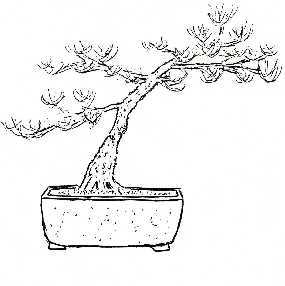
|
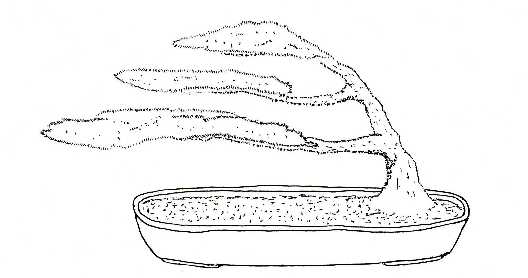
|

|
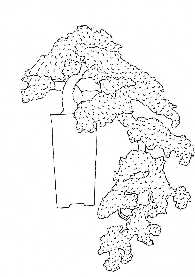
|
|
Informal1
|
Windswept2
|
Formal3
|
Cascade4 |
|
|
|
|
|
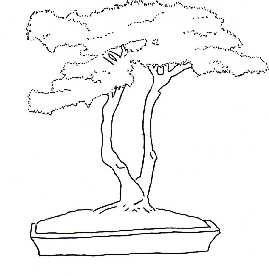
|
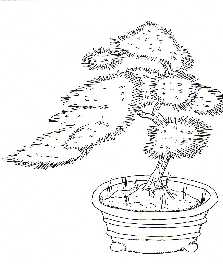
|
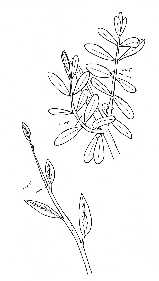
|
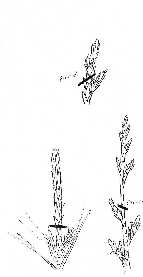
|
|
TwinTrunk5
|
Tree6
|
Cut7
|
Pinch8
|
|
|
|
|
|

|
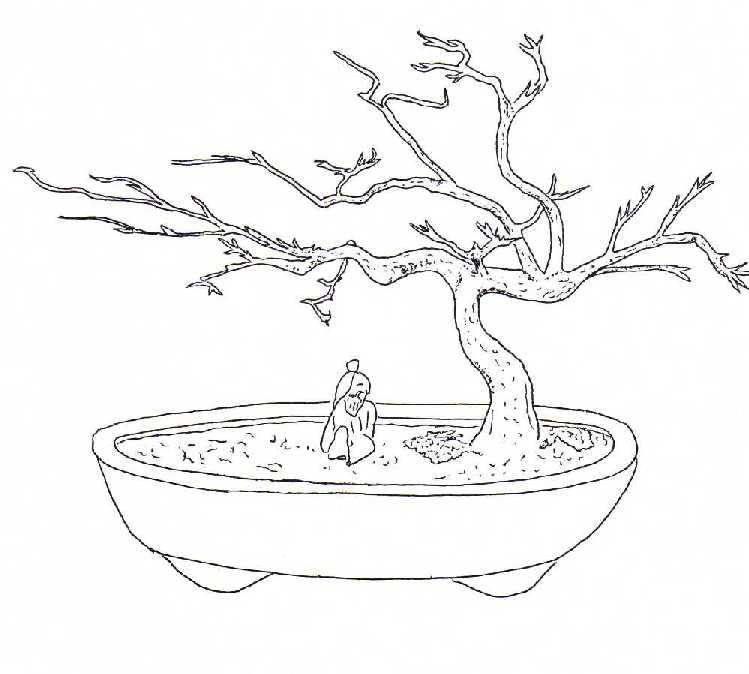
|
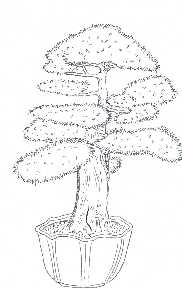
|
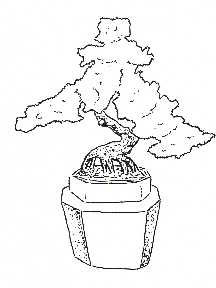
|
|
InRock9
|
Mudman10
|
Olive11 | Roots12 |
|
|
|
|
|
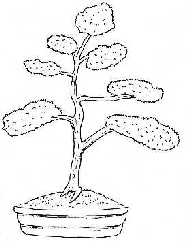
|

|
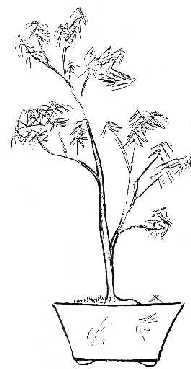
|

|
| Tree13 | Sinuous14 | Willow15 | Desert16 |
|
Windswept2 Formal 3 Cascade 4 TwinTrunk5 Tree6 Cut7 Pinch8 InRock9 Mudman10 Olive11 Roots12 Tree13 Sinuous14 Willow15 Desert16 |
Possibly someone else's tree at a Matsuri display. Imaginary tree. Possibly someone else's tree at a Matsuri display. Leory Fujii's large Portulacaria cascade. Possibly someone else's tree at a Matsuri display. Possibly someone else's tree at a Matsuri display. Close-up of landscape Olive tree branch. Close-up of landscape Juniper branch. Idealized version of some tree I once had. Someone else's tree at a Matsuri display, which I sketched without leaves. Four-man-size Olive belonging to Leroy Fujii which I had a chance to sketch up-close for an hour. Seventh tree shown in a Harper's Bazar article from 1900. Idealized version of some tree I once had. Second tree shown in an American Forestry article from 1920. Possibly someone else's tree at a Matsuri display. Sweet acacia ( Acacia farnesiana ) I once had. |
|
(Note: The work titled
A Bonsai Coloring Book, a guide to your first dwarf potted trees
--
with a list price of $3.95 and ISBN 0-9659913-4-2 -- was actually the first draft of the above book, but it was NEVER published. Several Internet sites do have an old listing for " A " -- but it does NOT exist and never did. What you want now is " The Bonsai Coloring Book," which can be gotten directly from us above.) The text and illustrations making up The Bonsai Coloring Book are copyrighted. All rights reserved worldwide. Violators will be prosecuted. There currently is only a single edition in English available. Any other editions, translations, or derivations therefrom will be noted here when they become lawfully published. Until such time, any other version of The Bonsai Coloring Book is illegal. If you learn about any, please contact rjb@magiminiland.org. Thank you. And special thanks to Virginia (Baran) Stewart. |